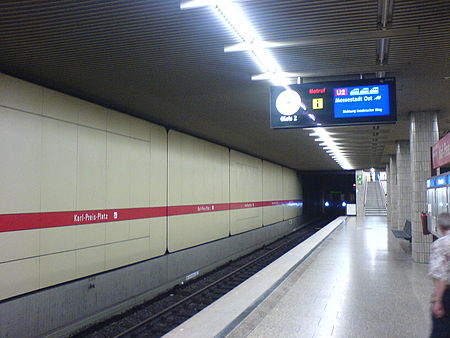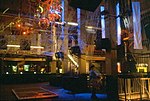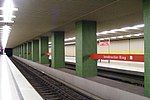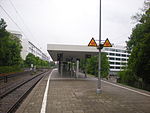Karl-Preis-Platz station

Karl-Preis-Platz is a Munich U-Bahn station on line U2. Since 12. December 2011 it is also used by the booster line U7 in the morning. The station is situated below Claudius-Keller-Straße in the borough of Ramersdorf. The walls are covered by grey-beige-colored panels, the floor is paved with artificial gravels that resemble gravels from the river Isar. The pillars are covered by grey-beige-colored tiles. The ceiling has rows of neon tubes and is faced with aluminium lamellae. At the western end you can get to the surface using a ramp. At the eastern end you use stairs to get to a mezzanine. From there you can reach the junction Claudius-Keller-Straße/Rosenheimer Straße. The station was named after the Karl-Preis-Platz which was named after Karl Sebastian Preis (SPD), town councilor in Munich and founder of the local building society GEWOFAG.
Excerpt from the Wikipedia article Karl-Preis-Platz station (License: CC BY-SA 3.0, Authors, Images).Karl-Preis-Platz station
Claudius-Keller-Straße, Munich Ramersdorf (Ramersdorf-Perlach)
Geographical coordinates (GPS) Address Nearby Places Show on map
Geographical coordinates (GPS)
| Latitude | Longitude |
|---|---|
| N 48.118055555556 ° | E 11.608611111111 ° |
Address
Karl-Preis-Platz
Claudius-Keller-Straße
81669 Munich, Ramersdorf (Ramersdorf-Perlach)
Bavaria, Germany
Open on Google Maps










